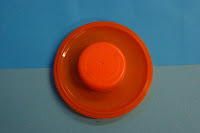The Seven Contrasts
Johanne Itten created the seven contrasts of colour, it was a way of defining and identifying strategies for colour combinations.
The contrast of saturation: The contrast is formed by the juxtaposition of light and dark values and their relative saturation.
The contrast of light and dark: The contrast is formed by the juxtaposition of light and dark values. This could be monochromatic composition.
The contrast of extension: Also known as the contrast of proportion, the contrast is formed by assigning proportional field sizes in relation to the visual weight of the colour.
The contrast of compliments: The contrast is formed by the juxtaposition of colour wheel or perceptual opposites.
Simultaneous contrast: The contrast is formed when the boundaries between colours perceptually vibrate. Some interesting illusions are accomplished with this contrast.
The contrast of hue: The contrast is formed by the juxtapositions of different hues, the greater the distance between hues on a colour wheel, the greater the contrast.
The contrast of warm and cool: The contrast is formed by the juxtaposition of hues considered 'warm' or 'cool'.
(Above research found on Worqx website: Ittens 7 contrasts...)










































No comments:
Post a Comment